The charge on any of the 2μF capacitors and 1μF capacitor will be given respectively (in μC) as

1, 2
2, 1
1, 1
2, 2
The correct Answer is:D
Step by step video & image solution for The charge on any of the 2 muF capacitors and 1 muF capacitor will be given respectively (in muC) as by Physics experts to help you in doubts & scoring excellent marks in Class 12 exams.
Updated on:21/07/2023Topper's Solved these Questions
- ELECTROSTATIC POTENTIAL AND CAPACITORSBOOK - DC PANDEY ENGLISHCHAPTER - ELECTROSTATIC POTENTIAL AND CAPACITORSEXERCISE - (A) Chapter exercises
227 Videos
- ELECTROSTATIC POTENTIAL AND CAPACITORSBOOK - DC PANDEY ENGLISHCHAPTER - ELECTROSTATIC POTENTIAL AND CAPACITORSEXERCISE - (B) Chapter exercises
17 Videos
- ELECTROSTATIC POTENTIAL AND CAPACITORSBOOK - DC PANDEY ENGLISHCHAPTER - ELECTROSTATIC POTENTIAL AND CAPACITORSEXERCISE - Check point 2.4
15 Videos
- ELECTROMAGNETIC WAVESBOOK - DC PANDEY ENGLISHCHAPTER - ELECTROMAGNETIC WAVESEXERCISE - Sec C
22 Videos
- ELECTROSTATICSBOOK - DC PANDEY ENGLISHCHAPTER - ELECTROSTATICSEXERCISE - Medical entrances gallery
37 Videos
Similar Questions
Find the charges on 6μF and 4μF capacitors
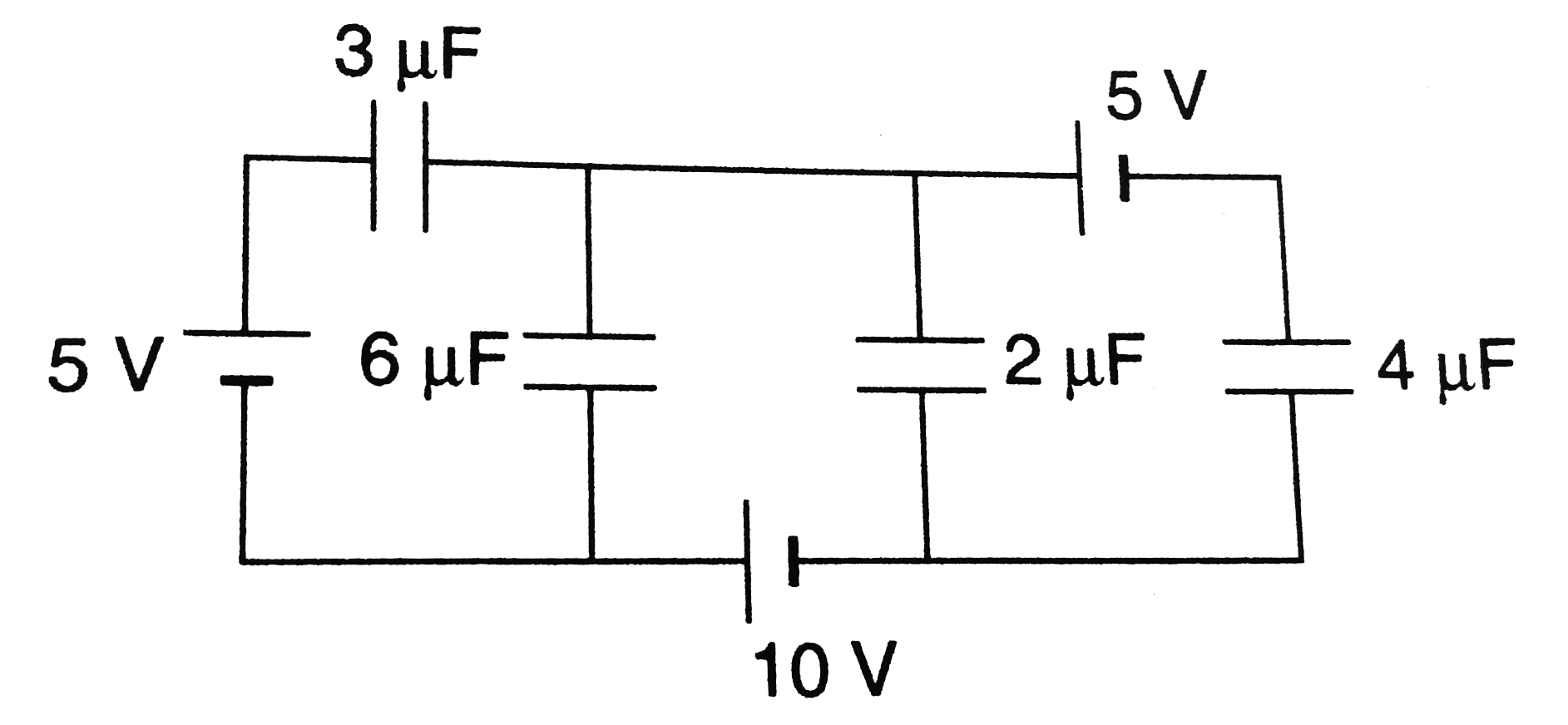
View SolutionThe charge on the 4μF capacitor in the steady state is

View SolutionThe charge on the 4μF capacitor at steady state is (in μC)
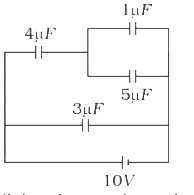
View SolutionThe charge on 3μF capacitor shown in the figure is

View SolutionThe energy stored in 4μF capacitors is
View SolutionThe charge deposited on 4μF capacitor in the given circuit is:
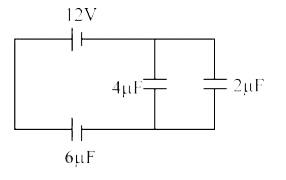
View SolutionIn steady state, find the charge on 3μF capacitor in μC
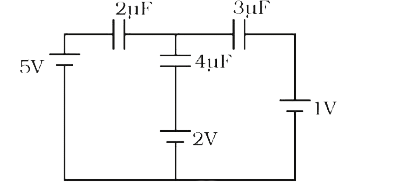
View SolutionThe charge on the capacitor of capacitance 10μF in steady state condition in the circuit shown is
_PHY_E05_271_Q01.png)
View SolutionIn the circuit shown below, the charge on the 60μF capacitor is
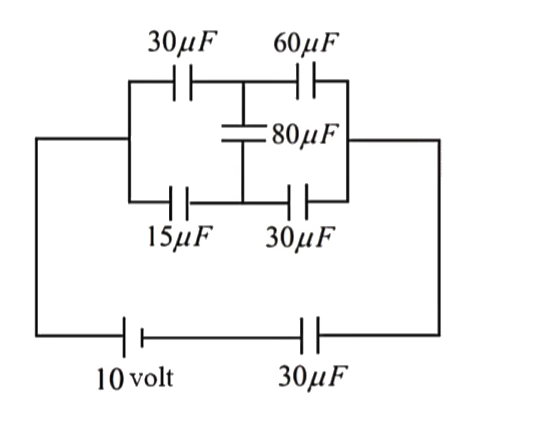
View SolutionA capacitor of capacitor of capacitance 2.0μF is charge to a potential diffrence of 12V It is then connected of uncharged capacitor of capacitance 4.0μF as shown in figure . Find (a ) the charge on each of the two capacitors after the connection, (b ) the electrostatic energy stored in each of the two capacitors.
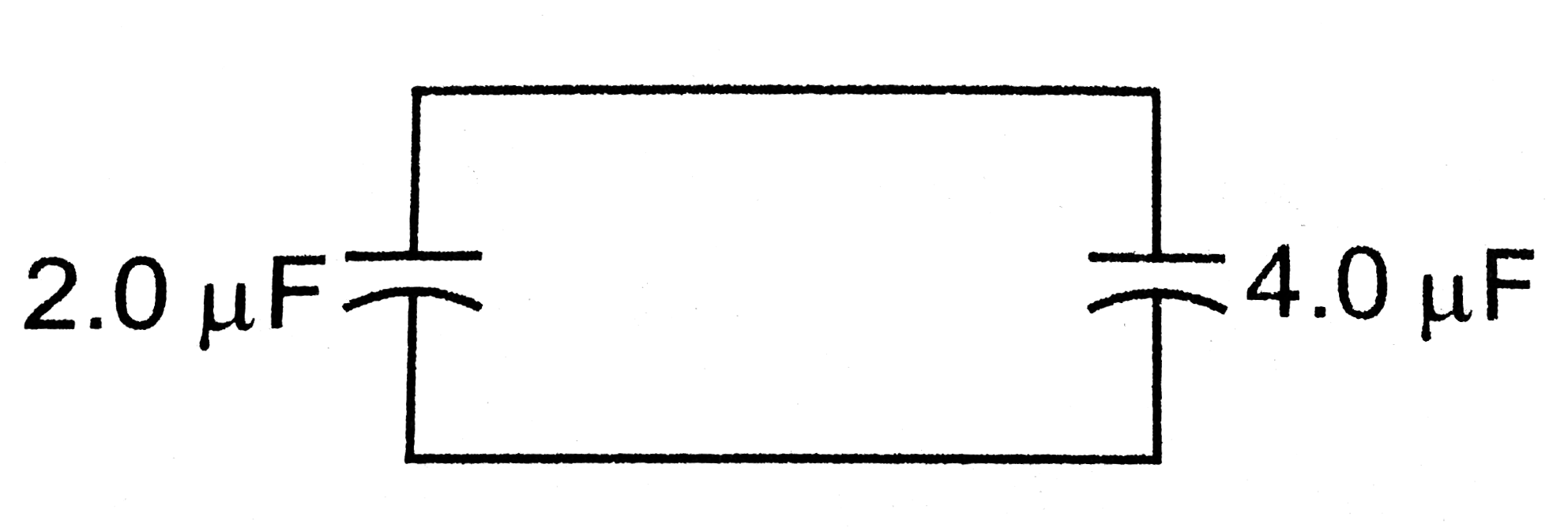
View Solution

